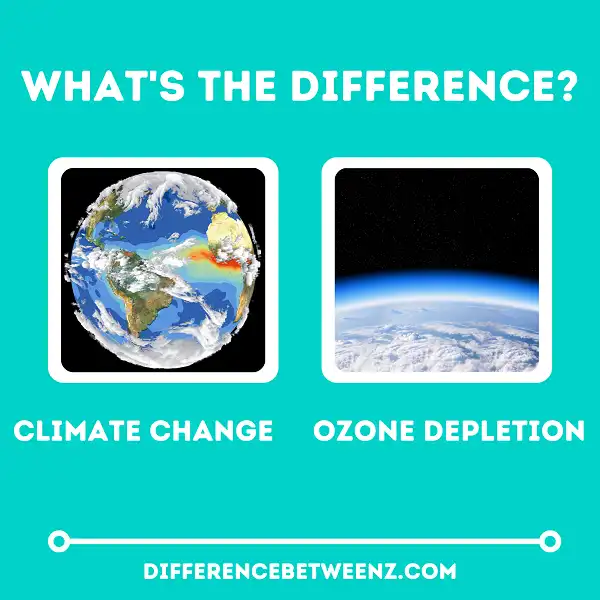Ozone depletion and climate change are both important topics that we should all be aware of. Both of these issues have the potential to cause major problems for our planet, but there is a big difference between the two. We’ll explore the differences between climate change and ozone depletion, and talk about why it’s important to understand the difference.
What is Climate Change?
- Climate change is a broad term used to describe the various ways in which the Earth’s climate is changing. Climate change includes both long-term trends, such as the gradual warming of the Earth’s atmosphere, and short-term fluctuations, such as El Niño events. The main drivers of climate change are greenhouse gases, which trap heat in the atmosphere and cause the Earth’s temperature to rise.
- Other important factors include changes in land use, such as deforestation, and perceptions of fossil fuels. Climate change can have a number of impacts on the environment, including rising sea levels, more extreme weather events, and shifts in plant and animal habitats.
- While there is still much uncertainty about the exact timing and magnitude of these impacts, there is broad consensus among scientists that climate change is real and is already having significant effects on the planet.
What is Ozone Depletion?
- Ozone depletion is the gradual thinning of the Earth’s ozone layer in the upper atmosphere. The ozone layer protects us from harmful ultraviolet (UV) radiation from the sun, so a decrease in ozone means an increase in UV radiation reaching the ground. UV radiation is known to cause skin cancer, cataracts, and other health problems.
- Ozone depletion occurs when chlorine and bromine atoms break down ozone molecules in the stratosphere. These atoms come from human-made chemicals called chlorofluorocarbons (CFCs), which are used in a variety of products such as aerosol cans and air conditioners.
- When CFCs reach the stratosphere, they are broken down by UV light, releasing chlorine atoms that go on to destroy ozone molecules. While CFCs are no longer used in most products, they can remain in the atmosphere for many years, so ozone depletion is still a problem today.
Additionally, another class of human-made chemicals, called hydrofluorocarbons (HFCs), are now commonly used as substitutes for CFCs. While HFCs do not damage ozone directly, they are powerful greenhouse gases that contribute to climate change.
Difference between Climate Change and Ozone Depletion
- Climate change and ozone depletion are both environmental issues that are of great concern today. Climate change refers to a broad array of environmental degradation that is predicted to result from increasing levels of atmospheric CO2, including global warming, alterations in precipitation, sea level changes and more extreme weather events.
- Ozone depletion, on the other hand, is caused by the release of chlorofluorocarbons (CFCs) and other ozone-depleting substances into the atmosphere.
- These substances break down the ozone layer, which protects the Earth from harmful ultraviolet (UV) radiation. While climate change and ozone depletion share some similarities, they are two distinct phenomena with different causes and different effects on the environment.
Conclusion
The ozone layer protects us from the sun’s harmful ultraviolet radiation. When it is depleted, more of these harmful rays reach the Earth’s surface, increasing our risk for skin cancer and other health problems. Chlorofluorocarbons (CFCs) are responsible for most of the damage to the ozone layer. In 1987, an international agreement called the Montreal Protocol was signed by 197 countries in order to phase out CFCs and repair the damaged ozone layer. Thanks to this treaty, the hole in the ozone layer are slowly healing. Although climate change is a very real and pressing problem, we should not forget about the dangers of ozone depletion.


